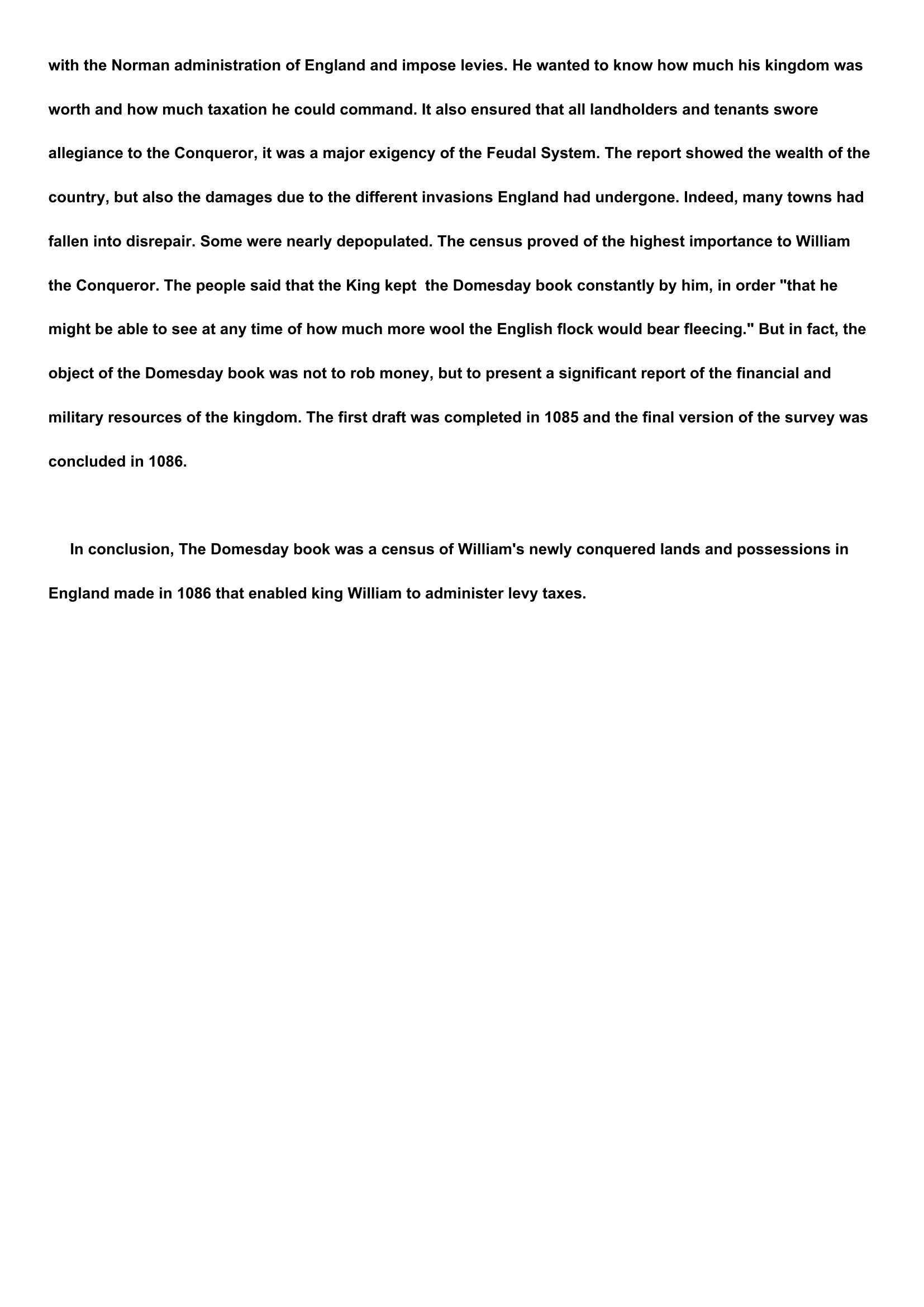The Doomsday Book
Publié le 05/10/2014

Extrait du document
«
with the Norman administration of England and impose levies.
He wanted to know how much his kingdom was
worth and how much taxation he could command.
It also ensured that all landholders and tenants swore
allegiance to the Conqueror, it was a major exigency of the Feudal System.
The report showed the wealth of the
country, but also the damages due to the different invasions England had undergone.
Indeed, many towns had
fallen into disrepair.
Some were nearly depopulated.
The census proved of the highest importance to William
the Conqueror.
The people said that the King kept the Domesday book constantly by him, in order "that he
might be able to see at any time of how much more wool the English flock would bear fleecing." But in fact, the
object of the Domesday book was not to rob money, but to present a significant report of the financial and
military resources of the kingdom.
The first draft was completed in 1085 and the final version of the survey was
concluded in 1086.
In conclusion, The Domesday book was a census of William's newly conquered lands and possessions in
England made in 1086 that enabled king William to administer levy taxes..
»
↓↓↓ APERÇU DU DOCUMENT ↓↓↓
Liens utiles
- The Book Thief Final version
- Heart of Darkness: symbolism in the book
- Schindler's List Schindler's List, motion picture about a German factory owner who saves a large number of Jewish people from death during the Holocaust, based on Thomas Keneally's book about Oskar Schindler.
- Book I INTRODUCTION Kelmscott Chaucer The Kelmscott Chaucer was published in 1896 by William Morris' company, the Kelmscott Press.
- Käsebier, The Picture Book - photographie.

































